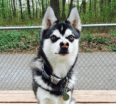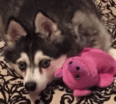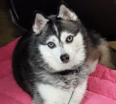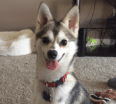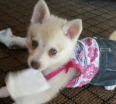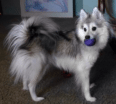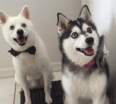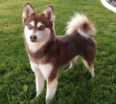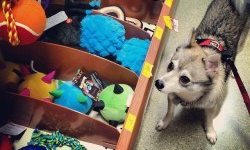After bringing your new Alaskan Klee Kai home
Bringing home a new Alaskan Klee Kai pup can be very exciting but it can also be very daunting. What should you do to prepare? How can you make the transition for your pup as smooth and as comfortable as possible?
It’s important to remember that for your pup, the world that he has known since he was born is gone; he’s no longer with his mother and litter mates. This can be stressful for a young puppy and it is not uncommon for them to require a little bit of time in order to accustom to their new environment. Most breeders let their young pups go home at around the 8-10 week mark, at this age you can consider them to be little babies; they will be dependent and require constant attention. However having said this, puppies will be puppies and they will go wherever their little paws will lead them and try to eat whatever they see. It is therefore highly recommended to “puppy-proof” your home and to not let your puppy explore the house alone without supervision.
What can I do to puppy-proof my home?
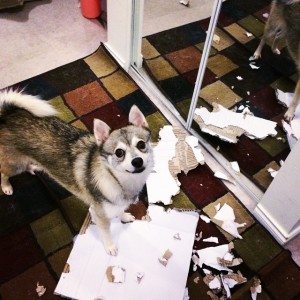
Not all human foods are dog-safe, some common foods that are toxic to dogs include: chocolate, raisins, grapes, and xylitol (in certain gums, fruits and vegetables). Ingestion of such food items may lead to irregular heart beat, seizures, tremors and even death. Always keep human food away from your dog’s reach.
Pay extra attention to the proper storage of chemical products such as detergents, medications, cleansers and pesticides as most if not all can be lethal to young puppies. Other dangerous items include: dental floss, threads, coins, fertilizers. When in doubt, keep it away from your pup!
Help! My Alaskan Klee Kai puppy is crying in his crate and will not sleep at night!
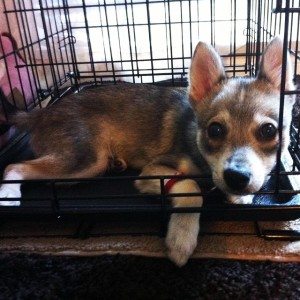
Here are some things that may help:
1.) Place an old t-shirt/towel of yours inside the crate with your pup. Your scent on the fabric may make him feel more at ease.
2.) Have the crate either in an area where your pup will be able to see you in your bedroom or have the crate in your bedroom. If you choose to place the crate in your bedroom, the goal is to ultimately be able to eventually move the crate into the desired location (ex. living room).
3.) Place a ticking clock near his bed, this helps to simulate the rhythmic sound of a mother dog’s heartbeat and can be calming and soothing for your pup.
4.) Covering the crate with a blanket or towel may help
Can I take him outside before he is fully vaccinated?
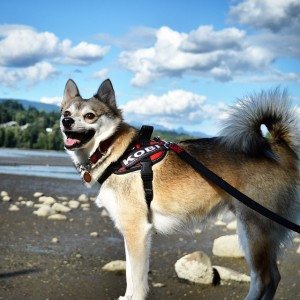
Young puppies are especially vulnerable to illnesses, which are often due to bacteria or viruses. These bacteria and viruses are often present in the grass, in the soil, on the pavement, on the sidewalk- basically anywhere where a dog has walked through. One of the deadliest viruses for young puppies is the parvovirus. Common symptoms include bloody diarrhea and vomiting; immediate medical attention is necessary if it is suspected as it can be lethal if not treated in time.
However having said all of that, socialization is key for this breed; generally, the younger a pup is socialized, the better. If you have a friend with a fully vaccinated dog, a little playdate may serve as good socialization; ideally you would want to avoid having it in a public area such as a park- a safe, fenced up backyard would be a better choice. Inviting your family and friends over to your home may serve as another safe option for you to socialize your pup. If you are really keen on taking your little guy outside, then you may wish to invest in a good quality dog travel bag; you can use it to carry him while you’re out- he avoids picking up germs by not touching the ground and you get to take him out, a win-win situation.

